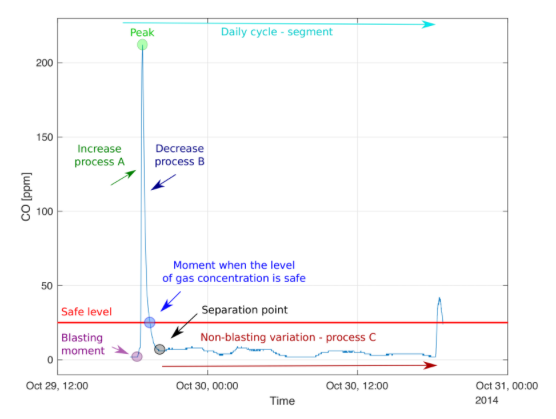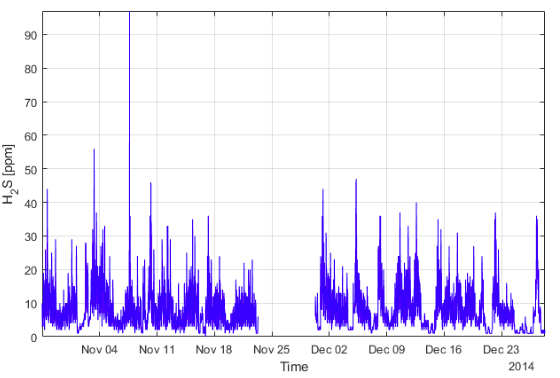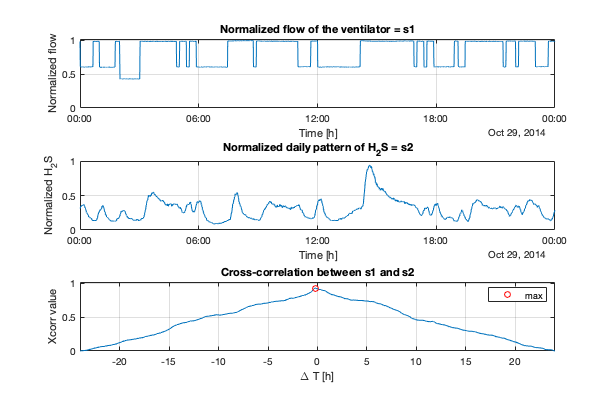The quality of air in the underground mine is a challenging issue due to many factors, such as technological processes related to the work of miners like blasting (which are the standard procedure in this mine to crumble the rock massif), ventilation or exhaust gases as well as gas releasing by rock masses and geometry of mine corridors. However, to allow miners to start their work, it is crucial to determine the quality of the air. The most critical parameter of the air quality is the carbon monoxide, which is odorless and colorless. It appears mostly due to technological processes. Last but not least is the hydrogen sulfide, which we treat rather as the natural hazard (because it is released by rock masses). Both of them in high concentrations can cause health problems or even death.
The air quality should be monitored and analyzed to understand the process as much as possible in order to facilitate the miner’s work and to improve its safety. In the performed analysis, we focused on H2S and CO concentrations analysis based on long term monitoring, see the publications below. The short description of the performed analysis of the CO and H2S gas concentrations has been included below.

Firstly, the signal segmentation is proposed, then segmented data (daily patterns) have been visualized and statistically analyzed. The key changes of the gas concentration have been identified.

The method for blasting moment localization, with no prior knowledge, has been proposed. It has been found that daily patterns differ, and CO concentration values reach a safe level at a different time after blasting. The waiting time to achieve the safe level after the blasting moment (with a certain probability) has been calculated based on the historical data. The knowledge about the nature of the CO variability and sources of a high CO concentration helped create forecasting models, as well as while planning mining activities.

The signal segmentation procedures for raw data have been proposed.
The segmented data (daily patterns) have been visualized and finally statistically analyzed. It has been found that there are deterministic components in the H2S data variation, which strongly depend on ventilation operation regimes, see Figure 4. This was a basis for further data analysis and for controlling air quality in the mine in a more effective way.

Pattern of H2S concentration in a deep copper mine and its correlation with ventilation schedule Journal Article In: Measurement, vol. 140, pp. 373–381, 2019. |
In: Sensors, vol. 19, no. 12, pp. 2757, 2019. |
